Did you know that I’ve already ruined the X-Men?
It’s always a little bit amusing to watch those who are upset about the direction taken by some bit of entertainment in which they are invested to decide by some manner of osmosis who must be responsible for this decision and who earns their scorn and ire accordingly. From personal experience, I can say that, typically, most of those folks are way off the mark—but never try telling them that their interpretation of the situation is off-base. They need for there to be a bad guy, and if nobody has stepped into the spotlight wearing a black hat, well, they’re simply going to staple one to somebody’s head so that they have a target for their outrage.
It’s all a bit tiresome, really.
I see YouTube pages with dozens of videos, each one carrying a thumbnail that’s come off of an assembly line, with huge headlines screaming FAIL! BOMB! DISASTER! And typically, an image of whomever the agreed-upon target is crying crocodile tears. Clearly, there’s an audience for this kind of stuff, or else so many wouldn’t be pumping out so many of these same empty, meaningless pieces. But it all makes me wonder: does anybody really believe in any of this stuff, or is both the creator and the audience in on the grift, agreeing in the manner that the audience for a magic show agrees to go along with the concept that the performer is capable of performing logic-defying feats? Performative outrage of this sort has become akin to attending a sermon in Church: everybody knows the words, everyone knows when to sing along, and most people are invested in the underlying idea of the thing rather than the specifics of what is being said.
None of it especially bothers me, but it did come onto my radar, as this morning I got looped into a social media thread in which some people were upset by the secret master plan that editor Wil Moss and I had to undermine the Black Panther by getting John Ridley to write his series and to make T’Challa fallible in that series. Now, getting Ridley to handle that assignment was in no way my doing, but beyond that, can you imagine any world where you wouldn’t want one of the most prominent screenwriters, a man who’s won an Academy Award for his writing, to helm such a title? I can’t. But because some people didn’t like the story that John told, there must be a reason, must be an active conspiracy to explain why. And a big part of this job is in being the responsible party.
So, yeah, I’m just getting settled in here for the ride to come. Because if there’s one thing that I can count on with absolute certainty, it’s that there are going to be a bunch of loud people who aren’t going to like the X-Men books under my oversight—and if they’re this agitated about them now, just wait until they actually get the chance to read one!
But on a more well-reasoned note, let’s move into a few questions from the very reasonable folks who follow this feature.
Zach Rabiroff
What's your overall take on Carmine Infantino as an editorial director? It's a real mixed bag of a tenure: an influx of new talent and new directions for an historically staid publishing line, contrasted with a shocking lack of confidence in, and commitment toward, creators and their work. What do you make of National Comics under his stewardship?
I had no firsthand experience with Carmine of course, Zach. So I don’t really know anything more than those John Ridley haters I mentioned at the start. But my sense is that Carmine was promoted into a position that didn’t play to his strengths, and that he worked hard at it, but mostly ineffectually. There were some very good projects initiated under Carmine’s tenure, and the overall look of the DC line entered the present a bit more. But Carmine often seemed to be under a lot of pressure, and that made him quick to give up on things. Titles got cancelled quickly during Carmine’s days, and while some of those cancellations may have been warranted, I’d guess that a bunch of them were Carmine getting cold feet and preferring to cut his losses rather than give a series a chance to catch on. I can’t locate a link now, but there was an interview at around the time of the SUPERMAN VS THE AMAZING SPIDER-MAN release in the mid-1970s that included Carmine, editor Julie Schwartz and Stan Lee. And it’s obvious that Carmine isn’t in his element. He spends a lot of the time defensive about the product he’s publishing, putting it down before the interviewer can. Whereas Stan, of course, is extoling the virtues of the medium and talking up the great strides that are being made in comic book storytelling. The contrast is stark. I think Carmine was often in a little bit over his head in that job, but his pride caused him to hide his uncertainty behind a kind of street bluster.
Jeff Ryan
For languages like Skrull or Krakoan, I’m assuming the writer gives it to you in English and the letterer uses a fontset that “translates” English text. How much work goes into those captions, knowing that most readers aren’t going to cryptogram their way into determines what it says? What percentage of readers do you think either break out a pencil or Google themselves up a page-by-page translation?
It all depends on the usage, Jeff. In many cases, that alien language doesn’t say anything in particular. So no great effort is made towards translating it into Skrullian or whatever. Occasionally, there’ll be a bit of copy that is done this way—for instance, we did an issue of FANTASTIC FOUR during Dan Slott’s run that was told from teh point of view of the alien heroes, the Unparalleled. And as their translators couldn’t make out the FF’s language, all of the balloons were in an alien font. In that instance, all of the dialogue was genuine, and we printed a translation a few issues later on the Fan Page. But as we worked on those scenes, we tried to construct them in such a way that, if you didn’t know what the FF were saying (as would be the case with most readers) you could still follow the story perfectly well. In that instance, the translation was simply an Easter egg that might have awarded any industrious code-breaking reader.
J. Kevin Carrier
The flying effects in that Captain Marvel serial are surprisingly good! I wonder why that method wasn't copied by later productions. It's certainly more convincing than the animation used in the Kirk Alyn Superman serial, or the rear-projection method in the George Reeves Superman series.
It’s only a guess on my part, Kevin. But I would say that the reason this method wasn’t used more often likely comes down to time and cost. Serials were produced on the cheap, and the budgets on early television such as ADVENTURES OF SUPERMAN were no richer. And especially with the small, crude screens of the day, it may have been seen as an unnecessary extravagance to build a full-scale replica to string up all over the place. On top of which, a lot of those productions were very studio-bound, and the dummy really only works if you’re filming in expansive areas that lend themselves to stringing the thing up.
David Baroldy
Speaking of Dan Slott’s FF run, can you please share some insight into the changes made to Franklin? Did the idea to reveal that he was never a mutant come from Dan, you or somewhere further up the chain? Why did you think it was the right thing to do?
While the change didn’t mean a lot to me, I wasn’t surprised that it was relatively controversial. This IS comic books, after all. I was surprised, and disappointed, to see people using it to paint Dan as some kind of bigot.
My memory of this, David, is that it’s something that we came up with together, though it’s quite likely that I was the one who suggested it when the question came up. And that’s likely a reflection of when I started reading the books. You see, for the first decade-plus of his existence as a character, Franklin wasn’t ever referred to as a mutant at all. Rather, his powers were clearly a result of his parents having been altered by cosmic rays (plus the additional factor of the energy from Annihilus’ Cosmic Control Rod that was necessary to ensure a safe birthing process.) Consequently, Franklin’s powers manifested almost immediately, whereas mutants (at least up to that point) typically began to display their powers in puberty. It wasn’t until the “Days of Future Past” storyline in UNCANNY X-MEN where an older Franklin was among the survivors in the dystopian future that people began to consider him a mutant. Thanks to its popularity, X-MEN tends to swallow up a lot of unrelated characters and concepts—Longshot and his cast, Captain Britain and his cast, etc. But especially with the rise of Krakoa and the change in the status of mutants worldwide, that presented some challenges to us on the Fantastic Four front. Specifically, we didn’t think it made sense for Franklin to relocate to Krakoa, nor for him to be exempt from the laws of regular humans in the way the assorted X-Men characters were. So when the opportunity presented itself to separate church and state came up, we took it. I didn’t really view it as anything other that reasserting the original status quo, but clearly some readers of a more recent vintage assigned it greater importance than that. But as I said at the start, that’s kind of the luck of the draw. Somebody’s got to wear the black hat, after all.
Mike Rhode
Tom, I have a memory that at some point over a decade ago, Marvel bundled up its library, and shipped it to France of all places, probably the CBDNI. Am I hallucinating, or did this actually happen? If it did happen, can you give us any insight into why?
I don’t have any memory of this happening, Mike. Which doesn’t necessarily mean that it didn’t. We did relocate many of our reproduction materials to Arizona at one point, but never overseas as far as I know.
Nacho Teso
I've been recently discussing some of the early stories in New Avengers on social network. There are people convinced that Ronin was 100% gonna be Daredevil but that was changed basically last minute because everybody caught on early on the reveal, and thus Echo was Ronin. I'm more on the "Daredevil might had been Ronin in an early idea phase" side, but nothing was set in stone and by the time Echo was revealed as such, the story had been written that way for a long time. So no last-minute change because the readership is smarter than the writer. Is there anything you can say in this regard?
Well, I’ll tell you, Nacho, in the very earliest conversations about NEW AVENGERS, Daredevil was going to be a part of that team. Which makes sense, since Brian was writing him. But early on, it became clear that where Bendis was taking the character in his solo series was incompatible with what he’d need to be doing in NEW AVENGERS, and so the idea morphed into Ronin. There may have been a split second when the idea was for Matt to wear the Ronin costume, but if so (it’s been a long time now) that instinct didn’t last for very long, and certainly not by the time teh first issue was being worked on. So no, nothing was changed at the last minute, and in all of the Ronin appearances in the book, Brian was aware that the character would be revealed to be Echo—because that was his idea in the first place. There’s no way I would ever switch the identity of a mystery character partway after having seen and experienced the train wrecks of ARMAGEDDON 2001 and the original Hobgoblin mystery. Because even if “everybody knows”, nobody actually knows until you execute it in a story, and if you do it well, the reveal works regardless. It’s bad storytelling to change the identity of your killer 3/4 of the way through your murder mystery.
Evan “Cool Guy”
The cast of Blood Hunt makes me think it’s coming out of your office, if so can you talk about the decision to do a “red band” version? Thanks!
BLOOD HUNT is being edited by me, Evan, yes. And the Red Band edition is simply a way to bring some additional interest and excitement to the project, and to hopefully make it more fun in the process. It was a notion that somebody came up with during one of our editorial summits where we get together to work out our future planning. I’m probably misremembering, but I have an itch that says the initial idea may have originated with Gerry Duggan—but if you hate it, don’t blame Gerry, blame me. Beyond that, until the books come out, I don’t know that I should really be saying much more on this subject for the time being. In the end, the story will tell the story.
Behind the Curtain
.Here’s a literal look behind the curtain, as you peer into my office from the hallway.
And actually, that’s not my office any longer—it’s one from the previous building that Marvel was in. Nonetheless, it represents my space relatively well. As you can see, a GO AWAY HUMANS sign completely fails to dissuade people from entering and ruining my concentration. Nick Lowe cleverly added the post-it reading IN to transform it into a sign rejecting the inhabitants of the Great Refuge. Hanging on the wall behind me within arm’s length in case of pressing need, you can see my ever-ready crowbar. On my desk, somewhat visible is a terrific Hulk bust sculpted and gifted to me by Ralph Attanasia of the CAKE BOSS program. You can also see the rolodex that I inherited from Dwayne McDuffie in 1990as well. And that’s a couple of Wizard Award statues at the upper left atop that bookcase.
Pimp My Wednesday
Our output is continuing to slow down as we segue from current assignments to new ones. But you won’t be deprived of new offerings from our editorial office this week.
It’s a legitimate shame that AVENGERS INC. crashed and burned so quickly, as i thought it was a really interesting way of doing something different with the franchise. And especially because writer Al Ewing and I had worked out the initial storyline as running ten issues. When it became obvious that we weren’t going to get to issue #10, Al had to pivot and accelerate the story crazily in order to get to teh climax in the runway we had. That’s why issue #4 suddenly takes a couple of wild turns. Fortunately, Al is a bit of a genius at this sort of thing, and so this final issue is still pretty satisfying. Once again, iron man Leonard Kirk provides expert illustrations for the occasion.
On the other hand, people seem to be responding well to AVENGERS: TWILIGHT, Chip Zdarsky and Daniel Acuna’s exploration of Earth’s Mightiest Heroes at the end of their time. As I spoke about when teh first issue was getting ready to release, this is a story that has been in the works for a very long time, so it’s satisfying to see people get to respond to it now. And just having sent it to print, let me tell you that issue #3 is one of the best single AVENGERS issues I’ve ever put out in my 26 year run. So don’t get caught flat-footed, seek this book and the previous issue out now and get yourselves ready for something special.
Of course, the Avengers continue to face trials in the digital space as well. In this week’s installment of AVENGERS UNITED, #17, Iron Man and the Scarlet Witch have to find a method of safely bypassing the deadly blockade that has cut off all contact with the moon of Yun-To. Wanda and Tony aren’t characters we typically see a lot of working together, so this is a cool change of pace in that regard.
A Comic Book On Sale 70 Years Ago Today, January 28, 1954
MENACE was a short-lived horror title released by Marvel, then Atlas, in the mid-1950s. The company released a lot of similar anthologies over that decade, each one completely interchangeable apart from the title on the cover. But MENACE was different, at least for its first batch of issues. During that period, it’s clear that editor Stan Lee had been looking at the competing EC Comics horror titles such as HAUNT OF FEAR and TALES FROM THE CRYPT and was inspired to attempt to compete with them on their level. In the end, he wasn’t able to sustain that level of commitment to the work, and the sales reports indicated that MENACE wasn’t selling notably better than the other more generic horror books, so he backed off. But there are some very good stories buried in these seventy year old issues—one of which even has some slight relevance today.
MENACE #11 included the story “I, The Robot”. It’s uncertain whether this story was written by Stan—he didn’t sign it, so it seems unlikely. But it was definitely illustrated by a young John Romita, then working in a very Milton Caniff-influenced style. That’s a page of the original art reproduced above. In the story, a scientist creates a robot who will perform any action that he orders it to. But when it is ordered by a criminal to kill the person in this room, its faulty regulator gets stuck on the command, and it murders the would-be crook in turn after the scientist, then sets out into the city intent on killing all of the men in all of the rooms. It’s not especially memorable apart from the design of the robot itself, which was distinctive. Decades later, looking for 1950s-based characters to fill up an issue of WHAT IF in which the Avengers were formed during that decade, editor Roy Thomas remembered that distinctive design, and had the robot reprogrammed as a member of the team. That What If story was later remembered by editor Mark Paniccia and writer Jeff Parker, who reintroduced the team as the Agents of Atlas in the modern day. (Small but important note: I wouldn’t let them call their series SECRET AVENGERS, as I already had designs on that title. Hence, they were forced to come up with the AGENTS OF ATLAS name.) As a bit of a tip-of-the-hat towards his first appearance, the Human Robot was named M-11 in that series.
A Comic I Worked On That Came Out On This Date
The second Heroes Reborn issue of AVENGERS came out on January 28, 1998. I don’t have all that much new to say about it that I didn’t cover when speaking about the first issue a month ago. Apart from one thing.
On the left, you see the original artwork to George Perez’s hyper-detailed cover to this issue, and on the right the cover the way it saw print. But if you look closely, you can see that the issue number on the board at the left has been crossed out, changed from #3 to #2. So what happened?
What you see above is the cover to AVENGERS #2 as George originally drew it. The idea here was to show the imprisoned Scarlet Witch as well as the shadow of a mysterious figure who would turn out in the issue to be the reconstituted Wonder Man. The printed cover was intended for the third and final chapter, where the transformed Avengers regained their spirit and opposed the alterations Morgan Le Fey had made to the world, restoring things to their rightful order. This cover was solicited and was set up and routed through the Bullpen for sign-off. But right at the eleventh hour, we ran into a big problem.
Editor in Chef Bob Harras was uncomfortable with the bondage element of this piece. But he was also uncomfortable with confrontation. And so he’d held off on voicing any concern until he minute the cover needed to go to print—the absolute last moment alterations could be made to it. He called me into his office and asked me if the Comics Code had signed off on this cover. I told him that yes, it had. Bob then instructed me to send the cover to the Code again. Realizing what was going on, I asked Bob pointedly, “If I send it to the Code again, and they pass it, are we going to print it then?” Harras stammered for a second, then admitted that no, he didn’t want to print the cover. So okay, now I needed a new cover in jig time, and I also had to break the news to George that this piece wasn’t going to be used. I realized that I could shift the #3 cover onto #2 as that piece was done an in hand, and that would allow us to make our print date. And George was understanding about the situation. He figured that the rejected cover would prove to be even more desired and valued on the original art market—which it was. He did a new replacement cover for #3 that was simply a single figure shot of the crackly Wonder Man against a blank background. He told me that it was the fastest cover he’d ever done (up until that time, as it turns out. He beat his own record with #19’s image of Ultron’s features against a black background.)
The Deathlok Chronicles
Issue #4 of the original DEATHLOK squarebound limited series was where the wheels really came off of the cart. By this point, I was working as editor Bob Budiansky’s assistant editor, so I experienced (and contributed) to all of this firsthand. This issue was difficult to put together, and it ends on a bit of a whimper rather than a triumphant note. There were a bunch of different reasons for this. The first one, and the one that would go on to become a recurring problem in the future, was the fact that, at this point, writers Dwayne McDuffie and Gregory Wright began to have differing opinions as to the direction the series and the character should take. To make matters worse, Bob had a vision that didn’t agree with either Dwayne’s or Greg’s. It was a bit of a mess, and it resulted in the plot for this final issue being rewritten something like six times. And the last three times didn’t really make it any better, it just shifted elements around to the satisfaction of no one. I believe that if we’d had infinite time, Dwayne and Greg would still be rewriting this plot. But eventually, the clock ran out, and everybody fell back into that familiar lie: “We’ll fix it in the dialogue.” On the art side, the excellent finisher Rick Magyar had decided that he didn’t want to continue on with the project and quit after issue #3 was done. Which was a shame, he brought a great finish to Denys Cowan’s artwork. After some discussion, Denys suggested an alternative: Kyle Baker, a great cartoonist who supplemented his more personal works by taking on the occasional inking assignment. Kyle agreed to do the job—but when he brought in the first batch of inked pages, Bob and I were horrified. At his best, Baker was a very impressionistic inker, but he’d done these pages in a faux Gil Kane approach, using what looked to be a felt tip marker and providing little difference in his line weights and haphazard spotted blacks. It looked bad. I don’t recall whether Bob immediately let Kyle go from teh project or whether we regrouped and he did so slightly after the fact, but we were facing a tough deadline on a 48 page issue without an inker and with no margin for error. Bob wound up calling upon Mike DeCarlo, a journeyman inker with a loose brush style whom we often used for licensed work. DeCarlo wasn’t really a great match with Denys, but his pages felt more complete than Kyle’s had, and he could be trusted to do his all to get the job done on time. In the end, though, we’d killed so much time reworking and reworking the plot that we wound up having to call in something like four additional inkers to take on a page or two each right at the end of the process. The full painted color disguised things a little bit, but the final artwork on this last issue was a bit of a mess. The cover didn’t fare much better. After three substantial painted images, Denys asked for the opportunity to paint the final cover himself. Bob agreed and gave him the change, despite not having ever seen Denys paint anything. Cowan was really excited when he brought his first attempt in—whether he was attempting to disguise his nervousness with swagger or he genuinely thought it was great I couldn’t say. But it just wasn’t there yet. Bob went over it and had Denys take the piece back and revise it at least once, possibly twice. Again here, we ran out of time, and so we ran with a version that we weren’t entirely happy with, but which had some strong elements to it. As you can see above, the Deathlok figure is pretty good. But the background elements of Harlan Ryker, Sunfire and the launching missiles feel undercooked. The whole thing was a perfect storm of problems, and it wound up taking a limited series that started off super-strong and having it go out on a weak note. That didn’t matter all that much in the end, as sales were strong, leading to the decision the following year to launch a DEATHLOK ongoing series. And that’s where I begin to wreck up everything over the course of many months. So look forward to those misadventures starting next week.
Super Heroes On Screen
As the 1940s gave way to the 1950s, the motion picture industry was undergoing some changes. The advent of television was beginning to change how households, especially children, consumed media. By this point, the most popular comic book character of all, Superman, had appeared in a pair of live action serials produced by Columbia Pictures. But plans were now under way to mount a regular weekly live action Superman television series. As a sort of proof of concept, and as a way of recouping some of the show’s set-up costs, the decision was made to begin production with an hour long feature film which could then be broken in half and used as two episodes of the eventual show. This was the very first full-on film (albeit a B-picture) to star a character from the comic books: SUPERMAN AND THE MOLE MEN.
The screenplay was written by Robert Maxwell, who had produced the long-running ADVENTURES OF SUPERMAN radio program, and Whitney Ellsworth, a longtime DC/National Comics editor who was being sent west to over see production on the new series. And it’s a somewhat astonishing bit of work, especially given its intended purpose and target audience. it continues themes that Maxwell had developed to great success in the radio program of Superman battling mindless intolerance and outright bigotry. On the scant budget that they had to work with, reproducing the Man of Steel’s awesome feats was going to present a challenge. So instead, Ellsworth and Maxwell let Clark Kent and Lois Lane carry much of the action, using Superman only occasionally, and pitting him against a force that all of his super-abilities can’t simply overpower.
The story revolves around the midwestern town of Silsby, where the deepest oil well in the world has been driven six miles into the ground, eventually penetrating into some unsuspected underground cavern. Clark Kent and Lois Lane of the Daily Planet (the only two characters from the Superman mythos to appear in this production) arrive in town to cover the story. But they get more than they bargain for. That night, two strange, glowing creatures emerge from the drill shaft, exploring through the night. Their appearance terrifies the locals who get a look at them, and their glow suggests that they may be dangerously radioactive. The creatures are utterly silent and curious, almost like children, and they stop to play ball with a young girl. But the ball begins to glow as well, and the knowledge that these strange beings might have harmed the child turns the citizens of the town into an angry mob, determined to hunt down and kill these weird invaders, despite the fact that they haven’t yet done anybody any harm. Kent becomes Superman in an attempt to neutralize the mob, disarming them physically and tossing them around like cordwood. But he can’t get the mob to relent. Eventually, one of the the creatures is shot and deathly wounded, and Superman conveys it to a local doctor’s office for treatment. But the mob, led by the angry and bigoted Luke Benson, intends to storm the office and finish off the creature. Meanwhile, the remaining creature has returned to the oil shaft, returned to his own world and come back with reinforcements and a powerful weapon—one that is clearly made out of a repurposed vacuum cleaner (it was a very small budget.) In the end, Superman is called upon to save Benson’s life (“It’s more than you deserve” he tells Benson coldly when the man attempts to thank him. ) and broker peace with the Mole Men, ultimately dispatching them back to their underground realm.
The eventual stars of THE ADVENTURES OF SUPERMAN, George Reeves and Phyllis Coates, play Kent and Lois for the first time in this feature. Reeves is clearly still a bit uncomfortable in the Superman costume (which was reportedly itchy), but he’s a take-no-prisoners Superman, at once morally upright and commanding. What’s more, Reeves doesn’t play his Clark Kent very differently. His Kent is dynamic and driven, only making the occasional passing nod to the fact that he’s meant to be somewhat cowardly and unassuming. Similarly, Coates’ Lois Lane is a thorough badass, giving no quarter and taking no guff, whether from her associate Kent, the authorities or the members of the mob. This wasn’t the motherly Lois played both later and earlier by Noel Neill, Coates is a hard and tough newspaperwoman.
Despite the limitations that the production is working under, they do a rather wonderful job making Superman work. There are a number of pretty spectacular wirework takeoffs and landings in this picture. When filming began on the series proper, Reeves fell to the studio floor when a wire broke, causing him to refuse to use the dangerous technique any longer. There’s also a terrifically inventive sequence in this movie where, in order to convey the sense of Superman in flight but not really having the budge to do so, a camera is hoist on a mobile crane and pulled down the length of a city block, shooting downward from Superman’s point of view as he outraces the angry mob to the doctor’s office where their would-be victim is being treated.
SUPERMAN AND THE MOLE MEN was re-edited and re-scored as the final two episodes of the first season of THE ADVENTURES OF SUPERMAN. But the producers had made a critical mistake. Because it had been released as a feature, the actors were all entitled to residual payments if it were broadcast on television. Accordingly, the two episodes weren’t broadcast during the first run of the show and didn’t see the light of day until the series was released into syndication. The feature version languished in obscurity for decades until it was eventually released on VHS home video for the character’s 50th anniversary in 1988.
The film is short, with a run time of only 58 minutes, and it’s a product of its era, so viewers of today may have a difficult time with its pace and style. But I think it’s great, a terrific representation of the character, with a creepy 1950s noir science fiction vibe that fits in well with the assorted paranoid monster pictures of that era. For those who want a sample, somebody put together a faux trailer for the film that can be seen at this YouTube link.
Posted at TomBrevoort.com
Yesterday, I wrote about the 1980s Eclipse series AIRBOY
And five years ago, I began a page-by-page analysis of FANTASTIC FOUR #1 in an attempt to work out secrets about how the issue was put together.
That’ll do us for now. Until next time, keep your powder dry. Because who wants wet powder?
Hat’s All, Folks!
Tom B




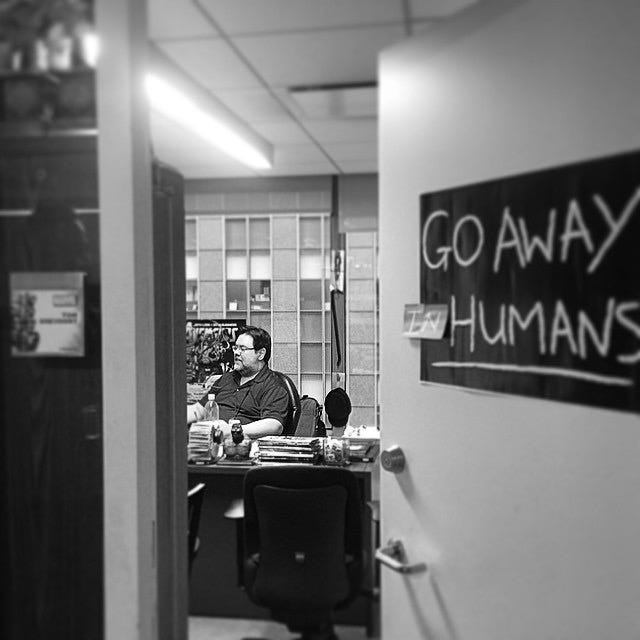
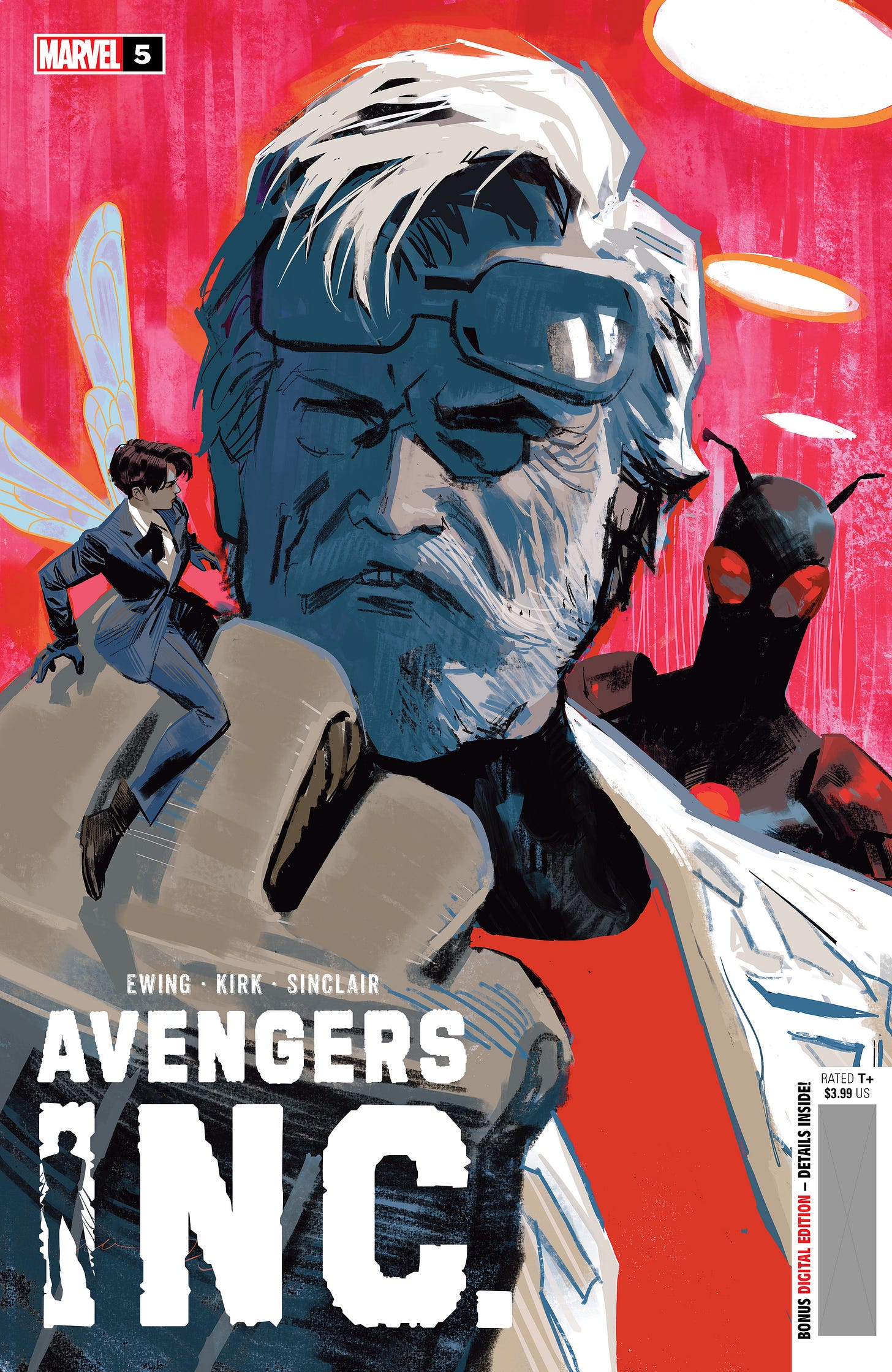
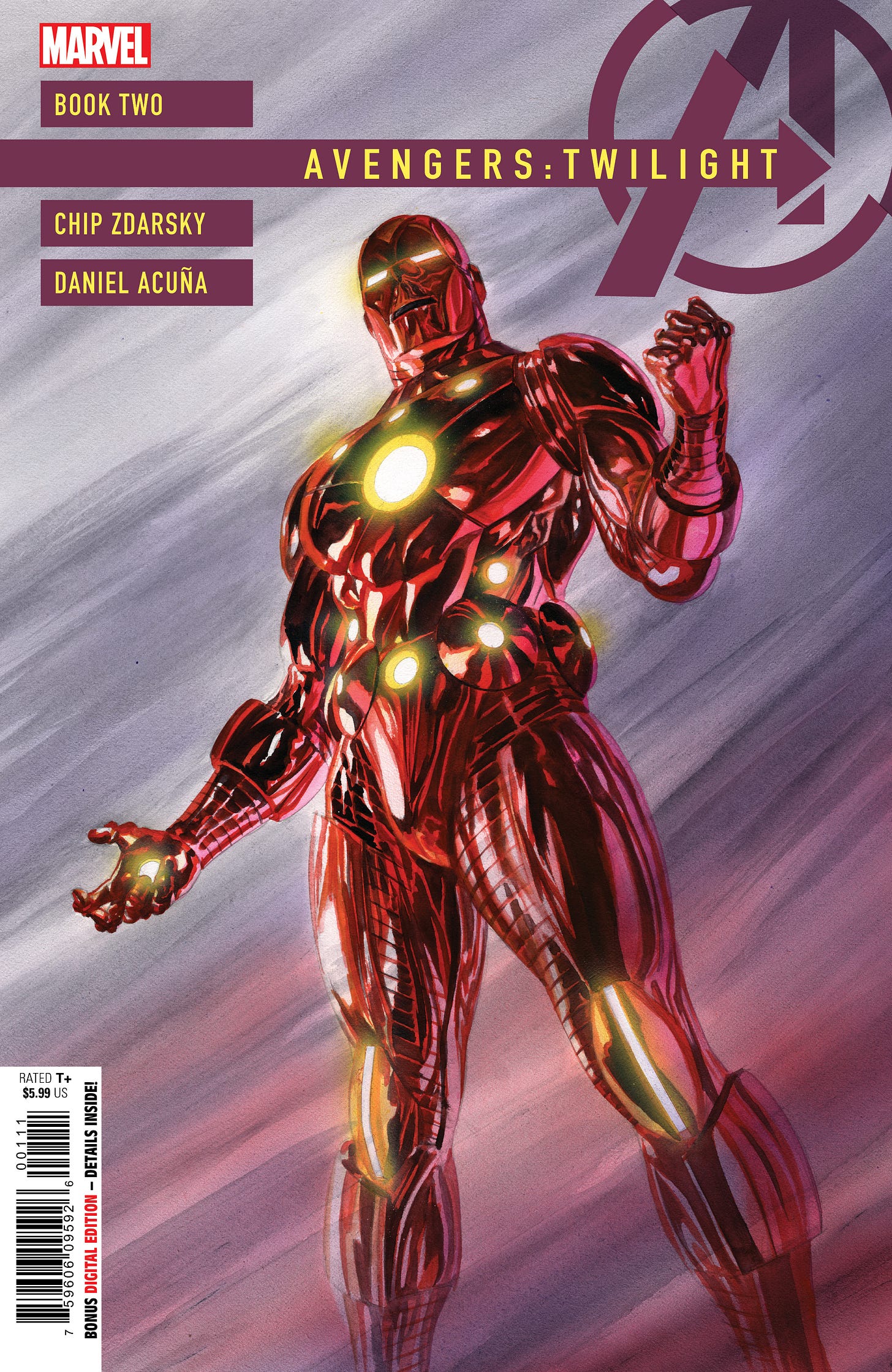
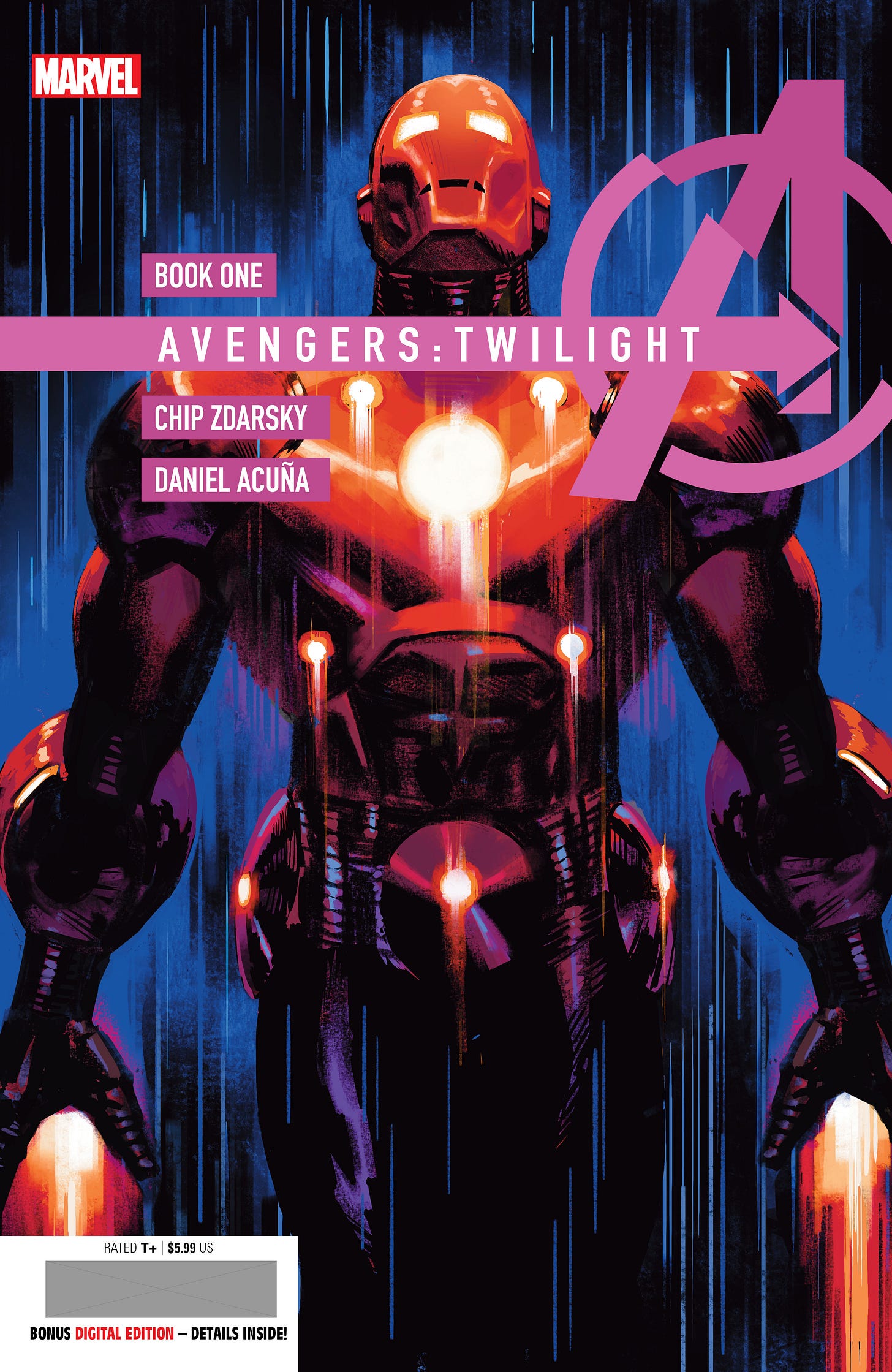

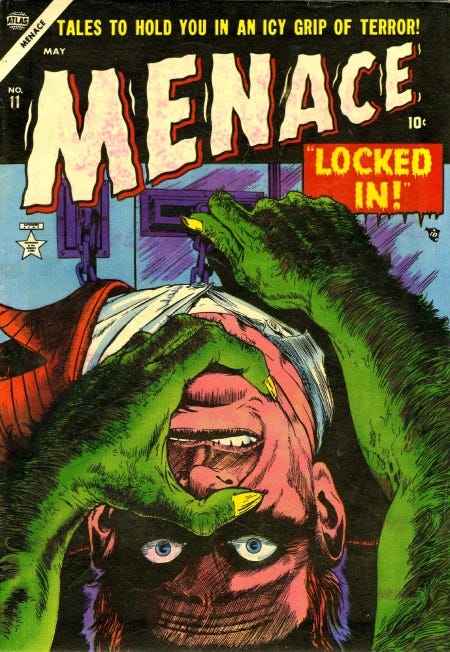
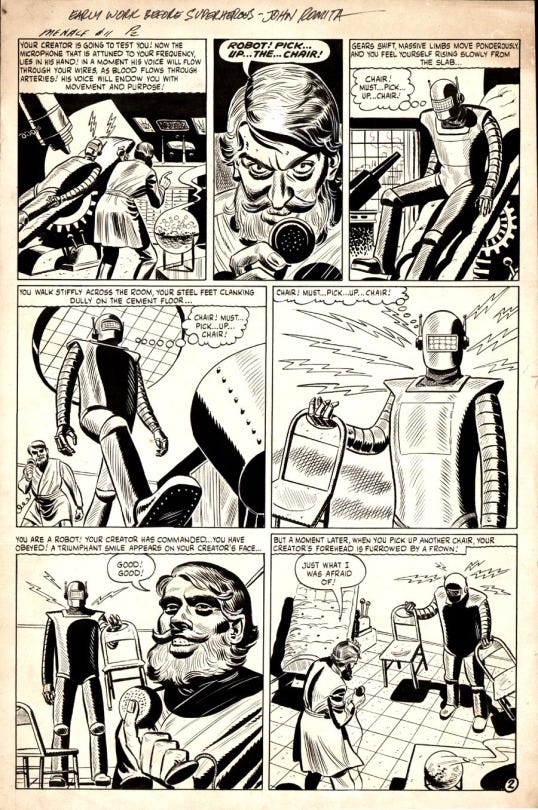
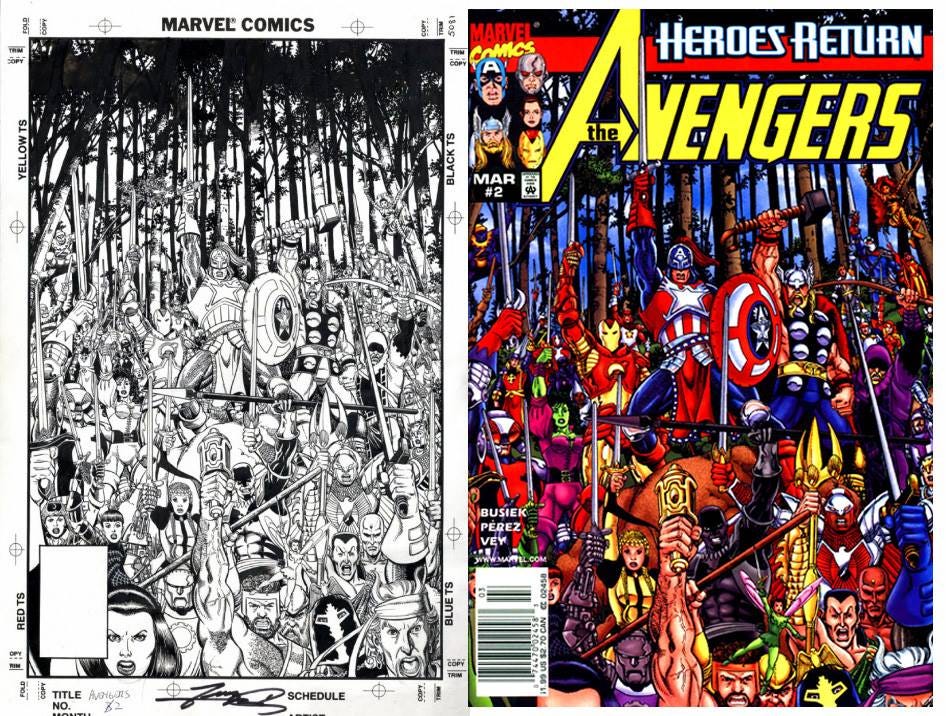
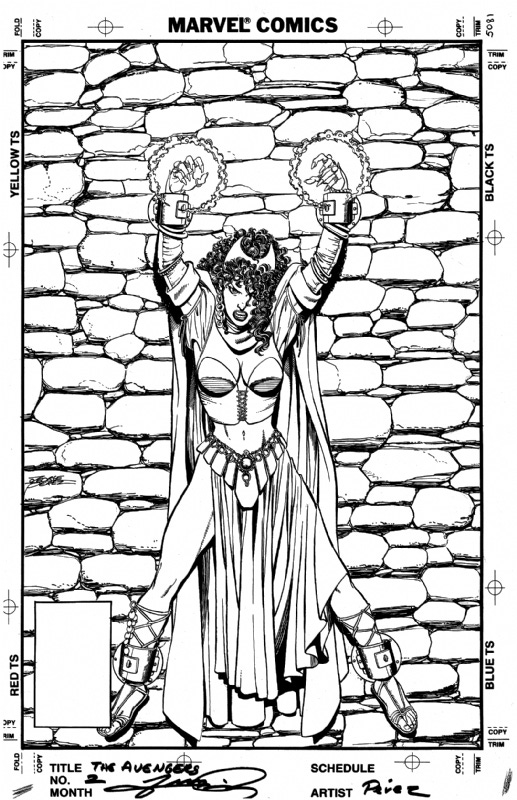
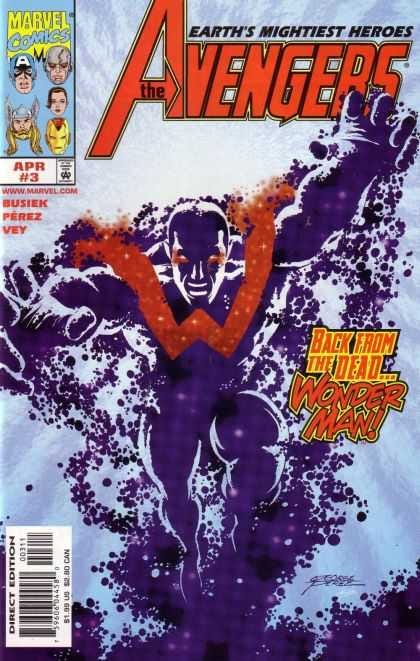
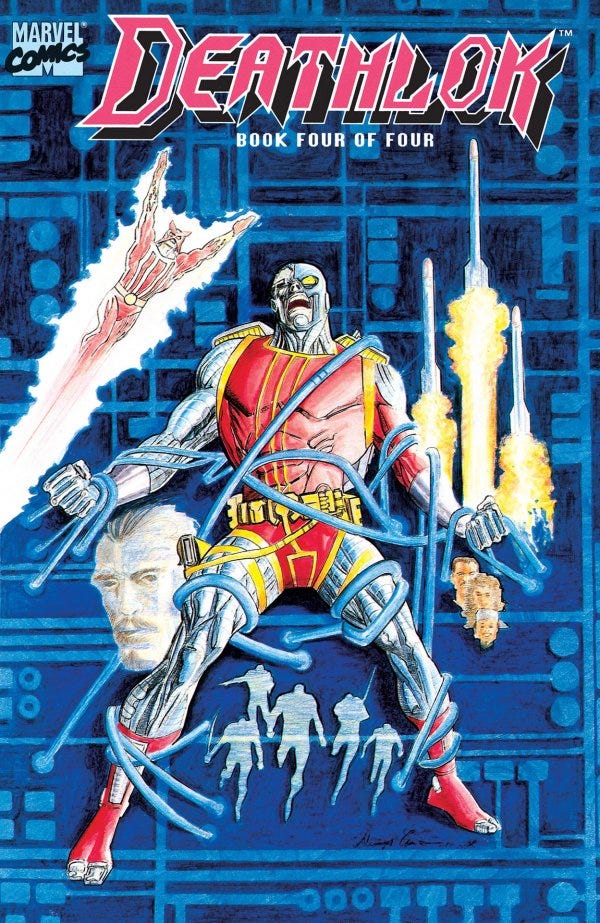
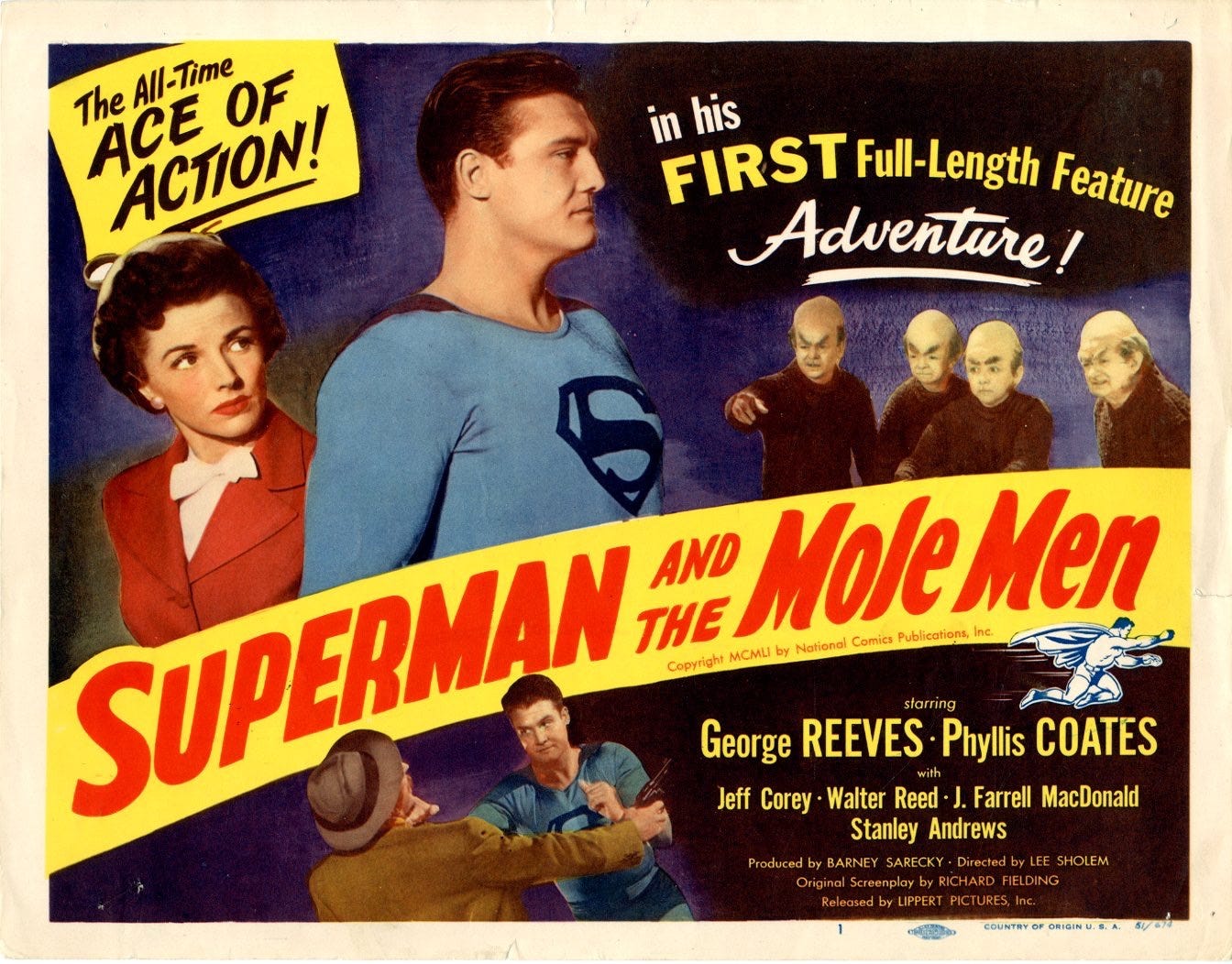
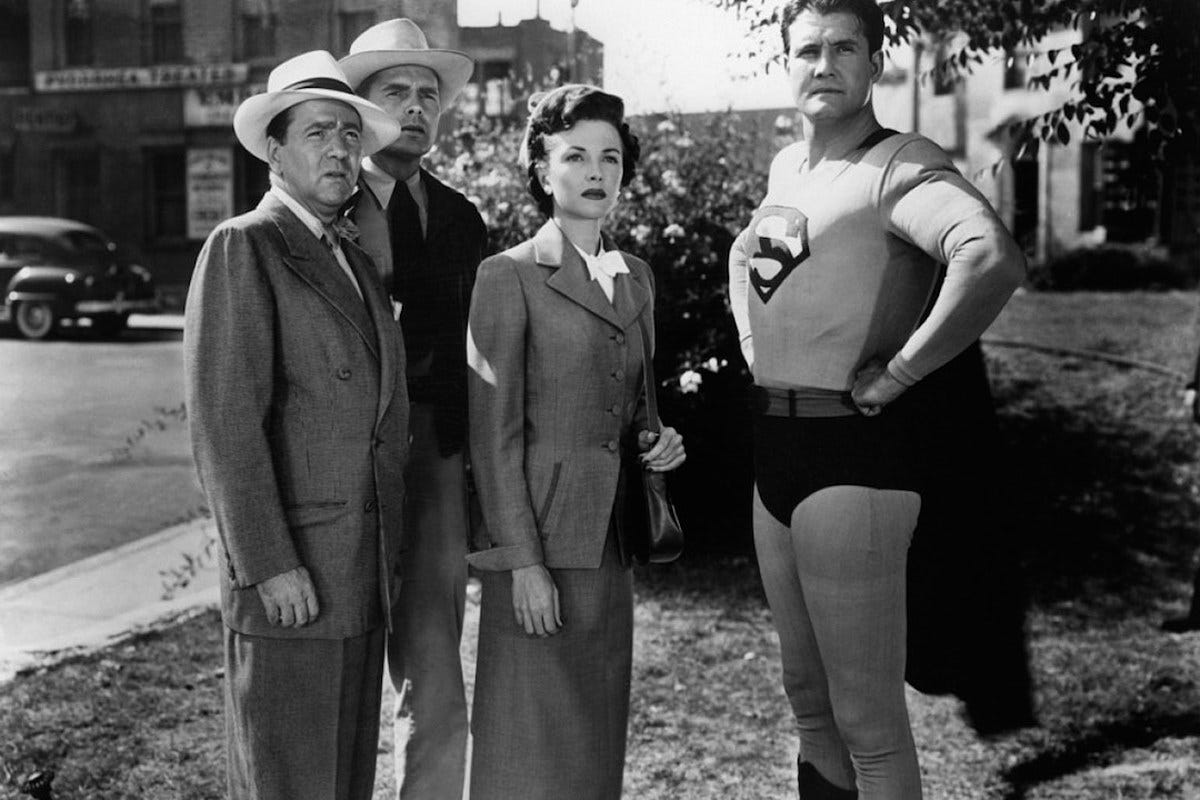
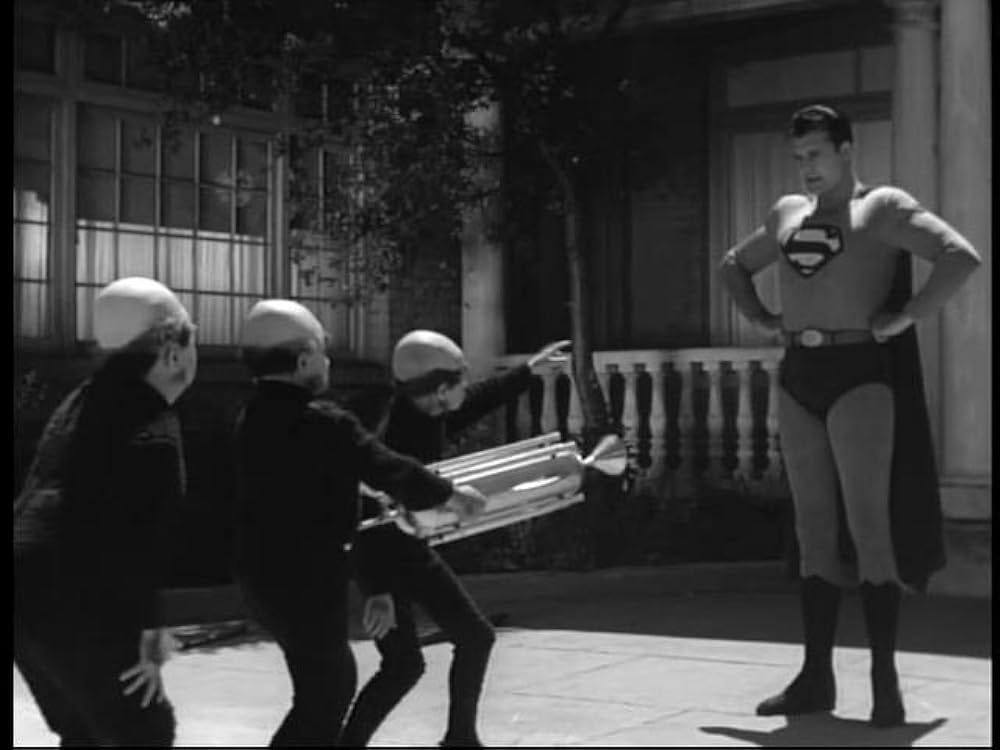
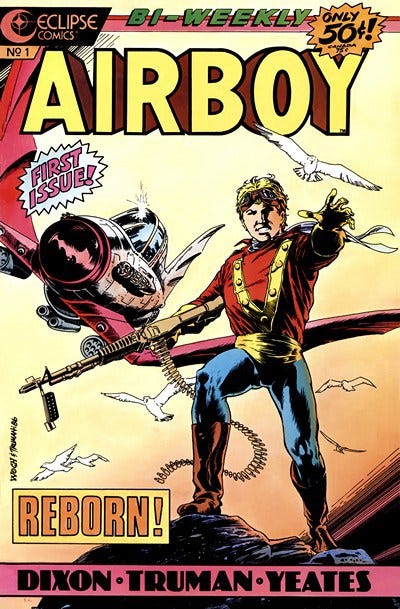
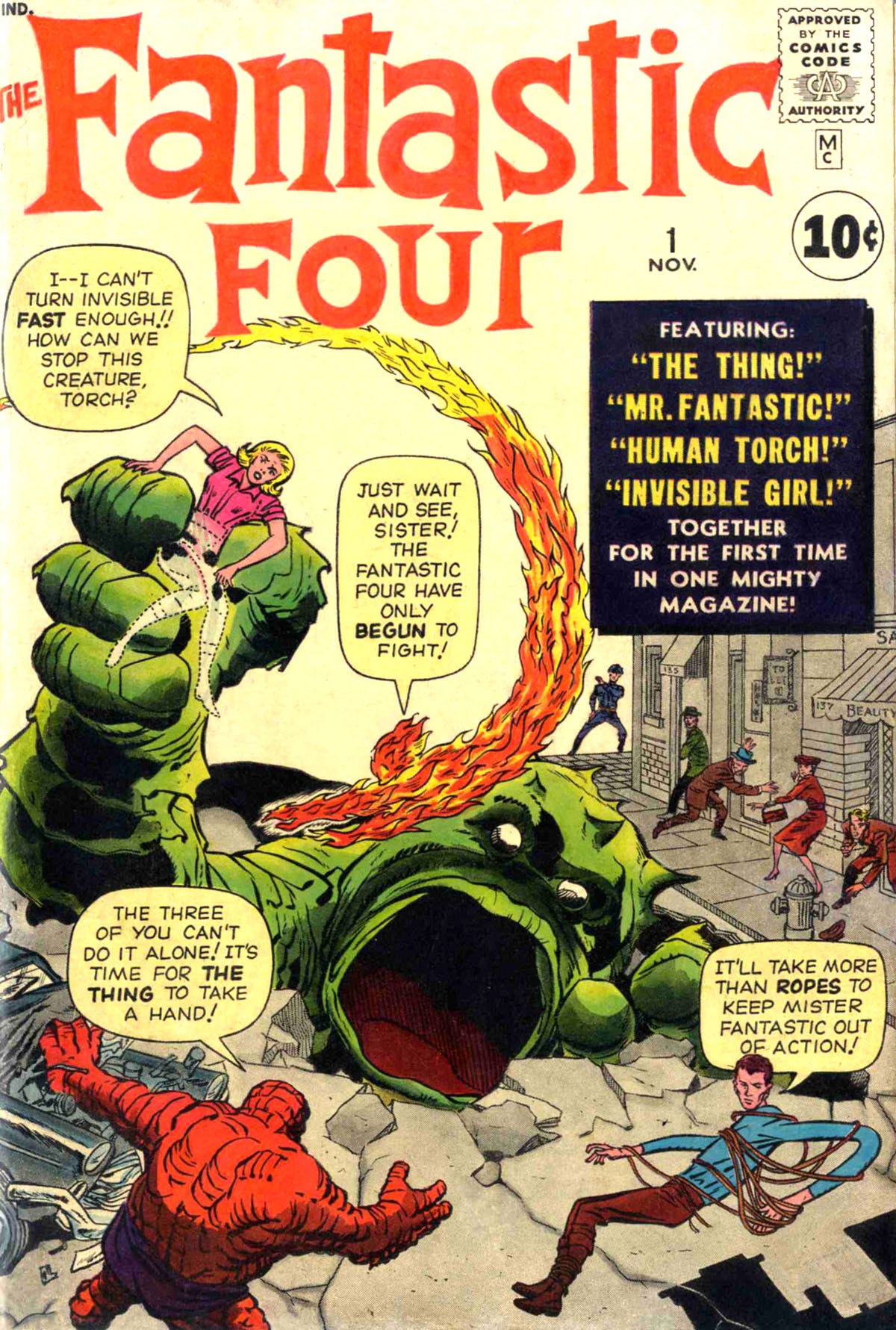
Regarding AVENGERS 2 -- if my hazy memory is right, I suggested that we swap in the cover for issue 3 to replace the Scarlet Witch cover Bob didn't want to use, because there wasn't time for George to do a new cover, and we were kind of one step out of sync with the covers anyway -- the Queen's Vengeance debuted in issue 2 but we didn't show them on the cover so solicits wouldn't give it away. But I could be wrong about that.
I did suggest doing the Wonder Man cover for issue 3, and was very happy with it, because due to the circumstances, that cover wouldn't be used in solicitation, so we could actually have it be a surprise to readers. And George could get it done in time without slowing him up on the issue he was working on.
[I also wanted to do an arrow-shaped caption on the cover saying "One of the Avengers on This Cover Will DIE in This Issue! But Which One?" -- pointing directly to Wonder Man, since he faded back to "dead" by the end of the story. But you were sensible enough not to do it.]
kdb
Tom:
A while ago you mentioned how Wolverine once struggled to fight a handful of Hellfire goons ("Wolverine Fights Alone!"— an issue of X-MEN that I waited on the EDGE OF MY SEAT for!) yet today that would be a walk in the park for him. That sort of "mission creep" or "power creep" in comics has always bothered me, the obsessive desire to keep upping the ante or "take it to the next level" (as Mike Carlin liked to say). It seems to me that leads to total Event Publishing (something Dan Jurgens predicted in the 80s)— where the fate of the world! The Universe! REALITY ITSELF! is always at stake. And it makes me wonder where all the wonderful, smaller, more self-contained "This Man, This Monster" stories fit in.
Related to this is that at the heart of many superheroes is the dichotomy of the Hero Who Struggles and the Hero Who is The Best. Spider-Man certainly started out as a Hero Who Struggles, but after 60 years he's a seasoned, experienced pro, and the only way to make him struggle is to have him constantly go up against stronger and more overwhelming foes/situations… which he overcomes… which only makes him even more experience and accomplished at what he does. It seems to be a vicious cycle that will sooner or later eat itself.
I believe this is where legacy characters come in— like Wally West becoming the Flash, or Miles Morales as a less-experienced Spider-Man. This is how we see *a* Spider-Man, at least, struggle against much smaller threats and odds.
But does that mean Spider-Man— I'm talking Peter Parker here, not the *idea* of Spider-Man— can Spider-Man never again be the Hero Who Struggles? The hero who spends most of an issue trying and trying and trying again to shoulder and lift a literally crushing weight that he's trapped under? (A Ditko reference, yes.) Can a character like that be "re-set"— WITHOUT a reality-altering Crisis or a partial/radical "de-powering"— or do we have to accept that these characters grow and change… and now it's Miles' turn.
Obviously "This Man, This Monster" happened right after the Galactus trilogy— setting the standard for how to bring your characters back to "ground level." But that was in a time before constant, company-wide Events which, to my mind, effectively wipe out or at least drown out the smaller moments— and even mid-sized moments like the introduction of Wakanda and the Black Panther. Nowadays those sort of things have to be PART of a big event, or it's like they never happened.
Some of this "power creep" is a natural extension of new people playing in the sandbox. Hell, Barbara Randall Kesel and I revamped HAWK & DOVE, purposefully making them much more than they were before. And that was fun! Exciting! And well-received! I'm not saying this shouldn't happen, not saying it's bad. Just that it feels like that's ALL that is happening these days.
Thank you for letting me rant. Move along. Nothing more to see here.